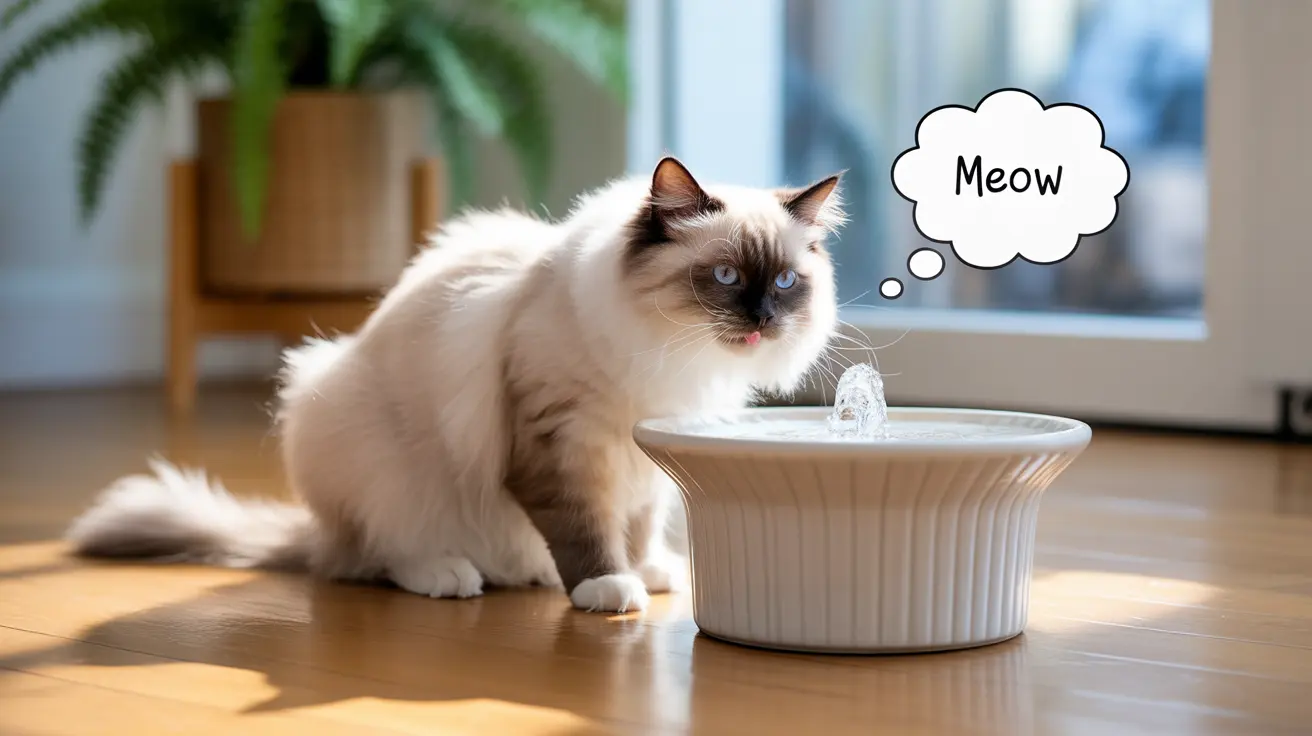Common Medical Conditions That Increase Thirst and Vocalization
Kidney Disease
Chronic kidney disease (CKD) is one of the most common causes of increased thirst in cats, particularly in older felines. When kidneys aren't functioning properly, cats compensate by drinking more water. This condition often comes with increased vocalization due to discomfort or anxiety.
Diabetes Mellitus
Cats with diabetes typically show increased thirst due to high blood sugar levels. The excess glucose in their system leads to increased urination, which then triggers more drinking. These cats may meow more frequently due to hunger or general discomfort.
Hyperthyroidism
An overactive thyroid gland can cause both increased thirst and vocalization. Affected cats often become restless and may meow excessively, especially at night. This condition is particularly common in senior cats.
Environmental and Behavioral Causes
Temperature and Season
Hot weather naturally increases a cat's water consumption. Your cat may also vocalize more when feeling uncomfortable due to heat, seeking attention or a cooler environment.
Diet Changes
Switching from wet to dry food often results in increased water consumption, as cats need to compensate for the reduced moisture content in their diet. Some cats may also become more vocal when adjusting to new food.
Stress and Anxiety
Environmental changes like moving homes, new pets, or changes in routine can trigger both increased drinking and meowing. These behaviors often serve as coping mechanisms for stressed cats.
When to Seek Veterinary Care
Urgent Warning Signs
Seek immediate veterinary attention if your cat shows these symptoms along with increased drinking and meowing:
- Lethargy or weakness
- Significant changes in appetite
- Vomiting or diarrhea
- Difficulty or pain while urinating
- Sudden weight loss
Monitoring Water Intake
Keep track of your cat's water consumption by monitoring bowl levels and frequency of refills. A sudden increase in water intake (polydipsia) can be an early warning sign of various health issues.
Prevention and Management
Regular Health Checks
Schedule routine veterinary check-ups, especially for cats over seven years old. Early detection of underlying conditions can lead to better management and outcomes.
Environmental Optimization
Ensure your cat has access to fresh, clean water in multiple locations. Consider using pet fountains, which many cats prefer over still water. Maintain a consistent routine and minimize stressful changes in their environment.
Frequently Asked Questions
Why is my cat drinking a lot of water and meowing more than usual?
This combination of symptoms can indicate various conditions, from simple environmental changes to medical issues like kidney disease, diabetes, or hyperthyroidism. If the behavior persists for more than 24-48 hours, consult your veterinarian.
Could excessive drinking and meowing indicate kidney disease or diabetes in my cat?
Yes, these are common symptoms of both conditions. Kidney disease and diabetes typically cause increased thirst and urination, while the meowing might be due to discomfort or anxiety associated with these conditions.
How can I tell if my cat's increased thirst and vocalizing are caused by stress or a medical problem?
Consider recent changes in your cat's environment or routine. If there are no obvious stressors and the behavior persists, or if other symptoms develop, it's likely a medical issue requiring veterinary evaluation.
What should I do if my cat suddenly starts drinking a lot and meowing excessively?
Monitor your cat's behavior and look for additional symptoms. If the behavior continues for more than a day or two, or if other concerning symptoms appear, schedule a veterinary appointment.
Can changes in my cat's diet or environment cause it to drink more water and meow frequently?
Yes, switching from wet to dry food, hot weather, or environmental stress can cause these behavioral changes. However, if the behavior persists or seems excessive, consult your veterinarian to rule out medical causes.






